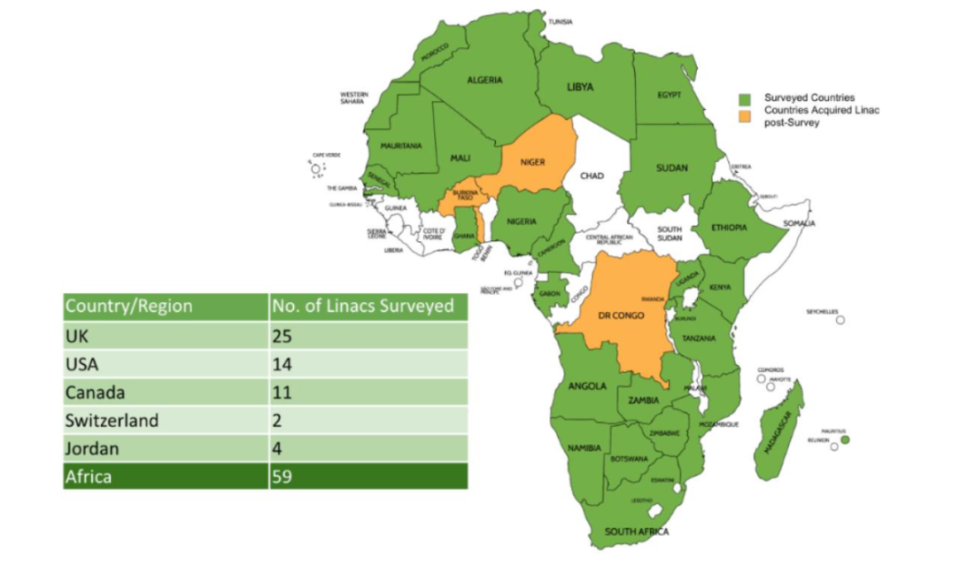Tackling the radiotherapy shortage in Sub-Saharan Africa by gathering and using data from Lower-Middle-Income and High-Income Countries’ facilities for designing a future robust radiotherapy facility
Historically, highly sophisticated medical linear accelerators (LINACs) frequently experience significant additional operational failures in low- and lower-middle-income countries (LMICs) than in high-income countries (HICs). This study focuses on LMICs in Africa where there is a substantial equipment shortfall, projected to be a gap by 2040 of about 5000 LINACs. The purpose of this study was to gain an insight into the poor performance of LINAC components, the unreliable infrastructure often encountered in LMICs and the consequent LINAC-related treatment downtime.
A questionnaire to obtain information on LINACs performance and repair experiences was sent to at least one cancer center in each of the 28 African countries that had experience treating cancer patients with LINACs at the time of the survey (4 more countries have acquired LINACs since we completed this survey). For comparison, questionnaires were also sent to selected facilities in four high-income countries (Canada, Switzerland, UK, US) and to Jordan, a middle-income country.
Responses to the survey confirmed significant multi-factorial issues that influence the extent of LINAC downtime especially the performance of multi-leaf collimators, electron guns, vacuum systems, RF power and software. Other challenges include electrical power instability, inadequate national funding (GDP/capita), and workforce capability as well as a significant shortfall in formal education and training programmes for the radiation therapy (RT) workforce.
This survey identified numerous modes of RT equipment failure causing treatment downtime in LMICs that can be overcome by improvements in the design of RT technology but they need to be accompanied by increased RT staff training, improved broadband access and increased annual national funding for RT. The collaborative network of LINAC-based RT facilities in 28 African countries that was developed to conduct this study is available for further investigations as RT capacity and capability improve in Africa.

